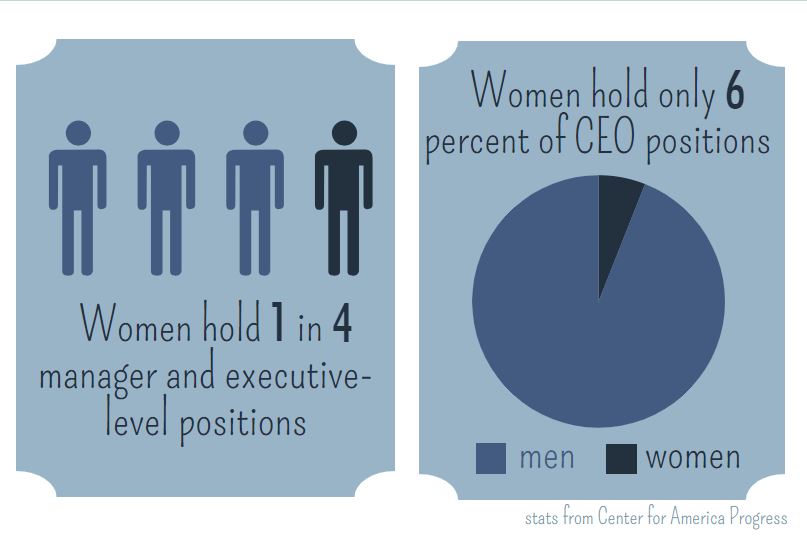Where are the female CEOs?
Graphic by Meimei Greenstein.
February 28, 2018
In 2016, Hillary Clinton became the first female politician nominated by a major party to run for president. While this was a significant accomplishment in itself, her loss signified the obstacles women still face today. Despite the fact that women account for almost half of the workforce, very few are promoted to leadership positions in government, academia or industry.
Women are greatly underrepresented in CEO positions. Of the current Fortune 500, Fortune Magazine’s list of the top 500 U.S. companies based on revenues, only 32 companies are run by female CEOs, or 6.4 percent. Even though the number of women CEOs on this list has increased in recent years and is at an all-time high, this percentage is still extremely low.
On the S&P 1500, a representation of 90 percent of the U.S. market, there are fewer companies with female CEOs than with male CEOs named John or David. With less female leadership, women are less likely to make key decisions that determine a company’s direction.
The gender disparity in the corporate pipeline starts at the first promotion, with men being 30 percent more likely than women to be chosen for manager positions, according to a recent study by the Lean In organization and consulting firm McKinsey & Co.
The women who do advance up the corporate ladder face more scrutiny from their coworkers and struggle to break through the “glass ceiling,” an intangible barrier that often prevents women or minorities from advancing to the highest positions, regardless of their qualifications or achievements.
People often perceive men as more effective leaders and women as supporters and caretakers. Women are expected to prioritize family life over their careers, so they’re seen as less committed to the company. But women shouldn’t be overlooked for leadership positions just because of these societal expectations.
The lack of diversity in top management positions not only hurts women, but also a company’s overall success. The presence of more female leaders in corporate management correlates with increased profitability, a 2016 paper by the Peterson Institute for International Economics revealed.
The most successful companies are able to adapt to changing marketplaces—having more female leaders in business brings diverse viewpoints that keep a company competitive. Socially diverse groups are more innovative because their members have different experiences and must consider alternate perspectives and opinions to solve complex problems.
With the lack of female leaders, women often struggle to find mentors in the male-dominated world of business. More women in CEO positions would encourage others to pursue these leadership positions.
It’s inspiring to see the female CEOs who care about issues that affect all women and use their position as a platform to promote socially conscious policies. Though female representation in leadership positions has gradually improved, more work needs to be done to reduce this gender disparity. Women deserve the same opportunities as men to lead and succeed.







